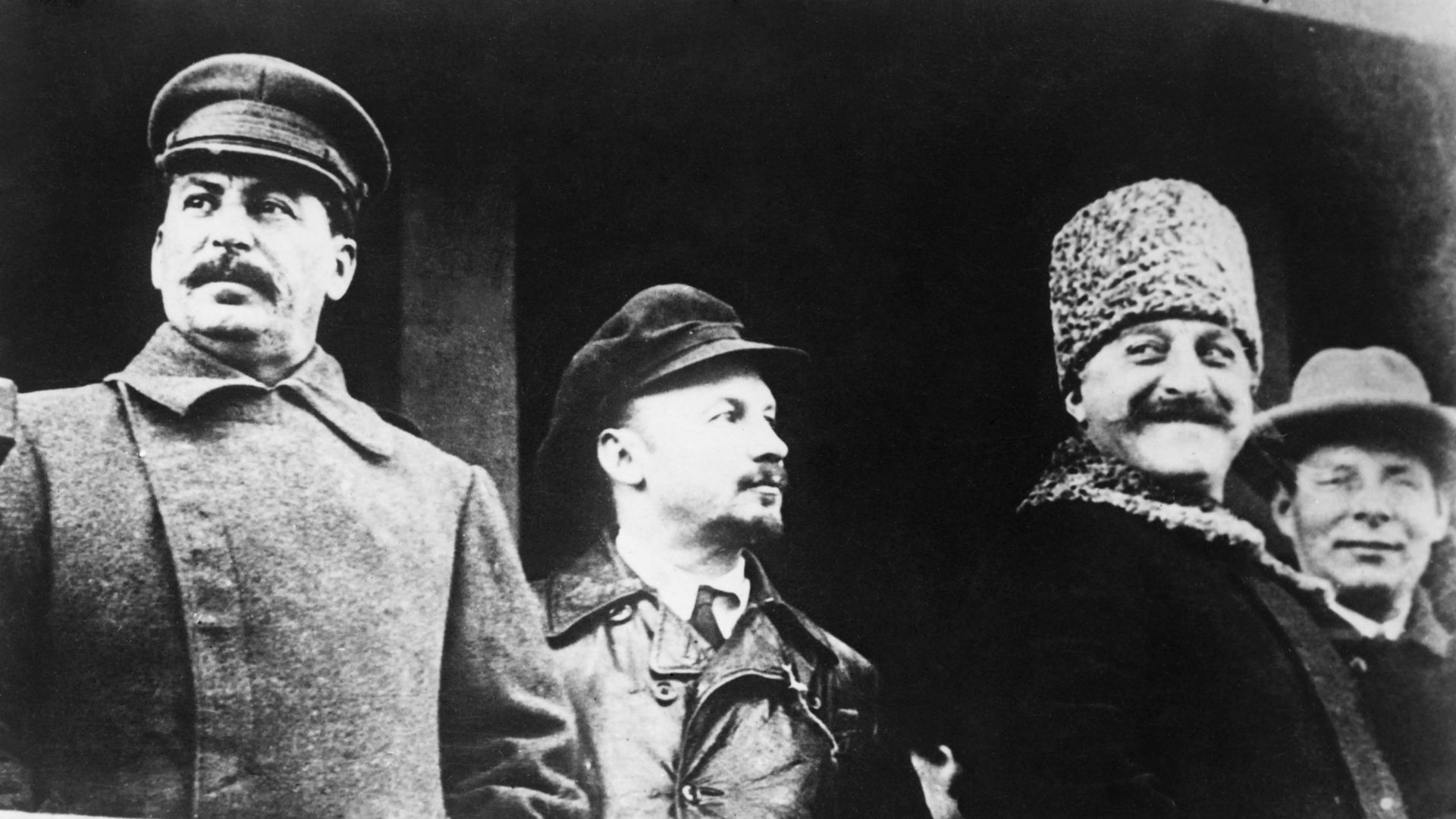
Bukharin, second from left, with Stalin on Red Square in 1930. Photo: Gamma-Keystone/Getty
The "enemy of the people," President Trump said Sunday, is the American media. Amid his numerous slogans, the phrase has made many people especially recoil because of its centrality in a chilling moment of 20th century history: Josef Stalin's 1930s show trials.
Why it matters: The trials demonstrated how the indictment of one class of people can rapidly spiral and cut across society.
Before the Great Terror reached its apex with the 1938 trial of Nikolai Bukharin, it swept through most of the senior Soviet military corps, unlucky party leaders, industry chiefs, elite writers, two dozen astronomers, and down the line to peasants — an estimated 1.2 million people in all.
But Bukharin's presence in the final and most momentous show trial of the Soviet purge was something else — a former Lenin comrade, right hand to Stalin, and Politburo member, Bukharin was now an "enemy of the people," accused of murder, spying and an attempted coup.
- "Fear hung over the city like a mist, seeping in everywhere. Everyone lived in terror of everyone else," wrote Fitzroy MacLean, a 25-year-old British diplomat then posted in Moscow. He wrote, "No one could be trusted. No one was safe."
- The description is from Eastern Approaches, MacLean's first-hand account of the trial. Setting the scene, MacLean described a preceding trial of a half-dozen marshals and generals:
"Up to a few days before these men had been held up as heroes, as examples of every military and civic virtue. Their portraits, larger than life size, were still to be seen publicly exhibited all over Moscow, side by side with those of Stalin and the members of the Politburo."
After their confessions and trial, these men were immediately executed. Now it was Bukharin's turn, along with that of 20 other alleged "traitors," "spies" and "wreckers."
The men were accused specifically of plotting to murder both Lenin and Stalin, overthrow the regime, restore capitalism, and hand over much of the country to the West. To back up the charges, prosecutors stacked some 50 volumes of evidence on the judge's desk.
- One by one, they incriminated themselves for the famine that had broken out across the Soviet Union in its early days and in the 1930s.
- They had intentionally slaughtered tens of thousands of pigs and horses and destroyed thousands of eggs, they confessed, all of it in the service of fomenting public unrest.
At the center of it all was Bukharin, the men said. He was a "cross between a fox and a pig," the prosecutor said, and the reason "why there is famine in the midst of plenty."
Bukharin did not fully play along, admitting to the general thrust of the prosecution case, but not its details. Yet, at the end, it did not matter. After an 11-day trial, the verdict was returned: For three, long prison sentences. For the remaining 18: "To be shot."
Two days later, Bukharin was executed.
